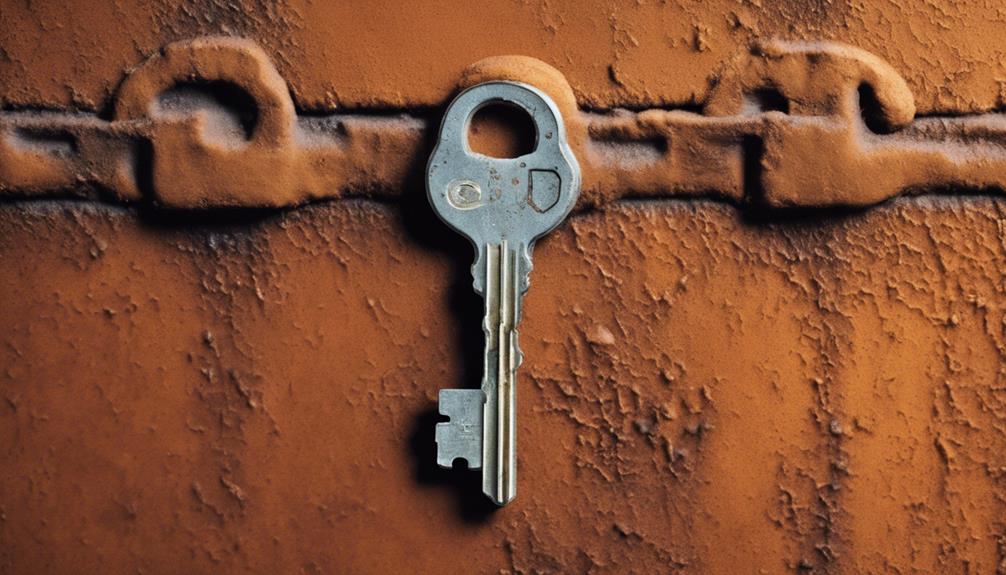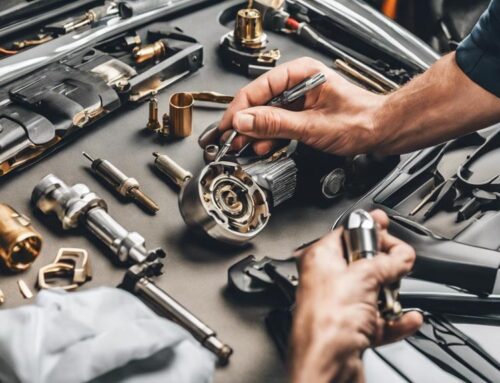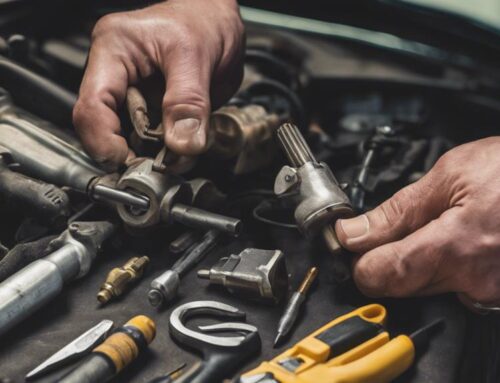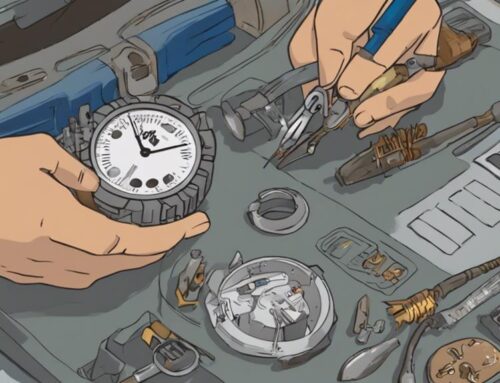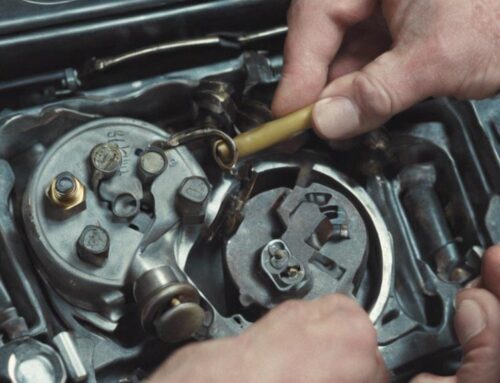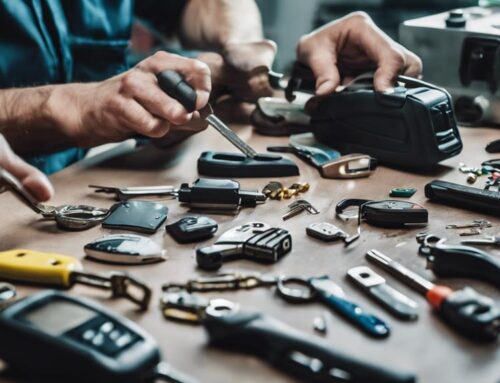To maintain your keys and prevent breakage, start with regular cleaning using a soft cloth and mild soap. Check for wear, cracks, and loose fittings regularly. Lubricate with graphite or silicone monthly, and handle keys gently to avoid bending. Signs of weakness include wear, cracks, loose fit, or difficulty turning. If a key feels stuck, jiggle gently or add lubricant. Never force a key. For further detailed key maintenance advice and locksmith services to address any issues, make sure you explore the full guide for thorough information on protecting your keys and preventing breakage.
Key Takeaways
- Regularly clean keys to prevent dirt buildup and ensure smooth operation.
- Inspect keys for visible damage like cracks, bends, or excessive wear.
- Use gentle pressure when turning keys to avoid breakage.
- Address stuck keys promptly by using gentle wiggling and lubrication.
- Replace severely bent keys and adjust slightly bent ones to prevent misalignment.
Key Maintenance Basics

When it comes to key maintenance basics, keeping your keys in ideal condition is essential to prevent breakage and guarantee they function properly. Different key types require varying levels of care due to the materials they are made of. Keys can be crafted from materials such as brass, nickel silver, or even titanium, each with its unique set of maintenance needs. Brass keys, for example, may tarnish over time, so polishing them with a soft cloth can help maintain their appearance and functionality. Nickel silver keys are more resistant to tarnishing but may require occasional lubrication to prevent sticking. Understanding your key materials and types is the first step towards ensuring they last longer and keep your locks secure. To learn more about preventing key breakage, check out Preventing Key Breakage in Locks: Tips and Insights.
Regular Cleaning Tips
To keep your keys in prime condition, it's important to maintain cleanliness. Utilize recommended cleaning products like mild soap and water or isopropyl alcohol. Clean your keys regularly to prevent dirt buildup and guarantee smooth operation.
Importance of Cleanliness
Regular cleaning of your keys is essential for maintaining their functionality and longevity. Neglecting key hygiene can lead to dirt buildup, which may cause keys to get stuck or break inside the lock. To keep your keys in top shape, follow these tips:
- Use a soft, dry cloth to wipe the keys regularly.
- For stubborn dirt, gently clean with a mild soap solution and dry thoroughly.
- Avoid using harsh chemicals or abrasive materials that can damage the key's surface.
- Consider using a small brush to clean between the crevices of the key to remove any hidden grime. Remember that proper maintenance can prevent future breakage and guarantee smooth operation of your keys.
Recommended Cleaning Products
Begin by selecting the right cleaning products to maintain your keys in prime condition. When choosing a cleaner, opt for eco-friendly options to keep your keys shining without harming the environment. Look for commercial products specifically designed for cleaning metal surfaces. These products are formulated to remove dirt and grime without damaging the key's structure. Eco-friendly cleaners are gentle yet effective in keeping your keys looking as good as new. Avoid using harsh chemicals that could potentially cause corrosion or weaken the metal over time. With the right cleaning products, you can guarantee that your keys remain in excellent condition, ready to access any door with ease. Additionally, regular cleaning with eco-friendly solutions can help prevent future repairs and maintain the longevity of your keys.
Frequency of Cleaning
When maintaining the cleanliness and functionality of your keys, it is essential to establish a consistent cleaning routine to guarantee their longevity and peak performance. To confirm your keys stay in top shape, follow these tips:
- Daily Dusting: Give your keys a quick wipe with a dry cloth to remove any surface dust or debris.
- Weekly Soak: Once a week, soak your keys in a mixture of warm water and mild soap to remove dirt build-up.
- Monthly Lubrication: Apply a small amount of graphite powder or silicone lubricant to the key's teeth to prevent sticking.
- Yearly Inspection: Conduct a yearly inspection of your keys for signs of wear, like bending or corrosion, and replace any worn-out keys promptly.
Regular maintenance not only keeps your keys functioning smoothly but also helps prevent potential issues like key duplication problems that may arise due to neglect or wear and tear.
Inspection for Wear and Tear
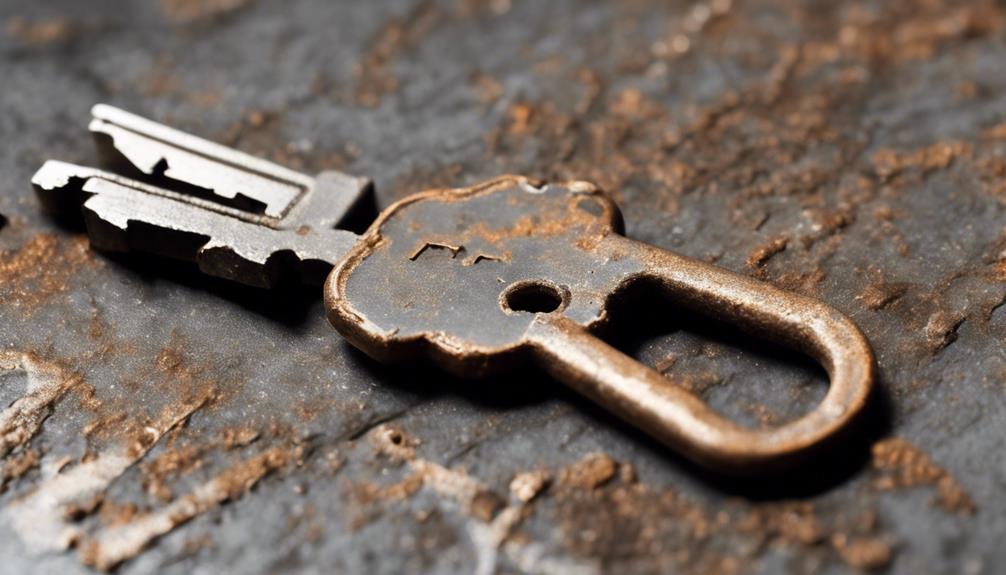
When maintaining your keys, it is essential to regularly inspect them for signs of wear and tear. Look for any visible damage, such as cracks or bends, that could indicate potential key failure. Establishing a routine inspection schedule can help prevent key breakage and guarantee they continue to function properly.
Wear and Tear Signs
Inspecting keys for signs of wear and tear is essential in maintaining their functionality and longevity. When checking your keys for wear and tear, keep an eye out for the following indicators:
- Scratches: Excessive scratches on the key blade could weaken its structure.
- Bent or Warped Key: A bent or warped key might not align correctly in the lock.
- Rust: Rust can hinder the key from smoothly fitting into the lock.
- Loose Key Teeth: If the key teeth are loose or wobbly, it's a sign of potential breakage. Regularly inspecting your keys for these wear and tear signs can help you identify issues early on and prevent the need for key replacement. Remember that proper maintenance is key to ensuring the longevity of your keys and Preventing and Repairing Common Lock Failures.
Regular Inspection Routine
Establishing a regular inspection routine for your keys is essential in guaranteeing their best performance and durability. To prevent key breakage, make it a habit to inspect your keys for any signs of wear and tear regularly. Look out for any bending, chipping, or corrosion on the key blade. If you notice any of these issues, consider key replacement to avoid potential lock problems. Additionally, use preventative measures such as lubricating the key and lock to reduce friction and wear. A simple inspection routine can save you from the hassle of dealing with a broken key in the future. So, grab your keys, give them a once-over, and keep them in first-rate condition!
Lubrication Techniques
To properly maintain your keys, utilizing effective lubrication techniques is crucial in preventing breakage and signs of failure. Here are some key tips to keep your keys in top shape:
- Choose the right lubricant: Use graphite lubricant for standard keys and silicone-based lubricants for modern electronic key fobs.
- Apply lubricant sparingly: A little goes a long way, so don't overdo it to avoid attracting dirt and debris.
- Insert and remove key: After applying lubricant, insert and remove the key a few times to guarantee even distribution.
- Wipe off excess: Use a clean cloth to wipe off any excess lubricant to prevent buildup that could cause issues.
Avoiding Forceful Turns
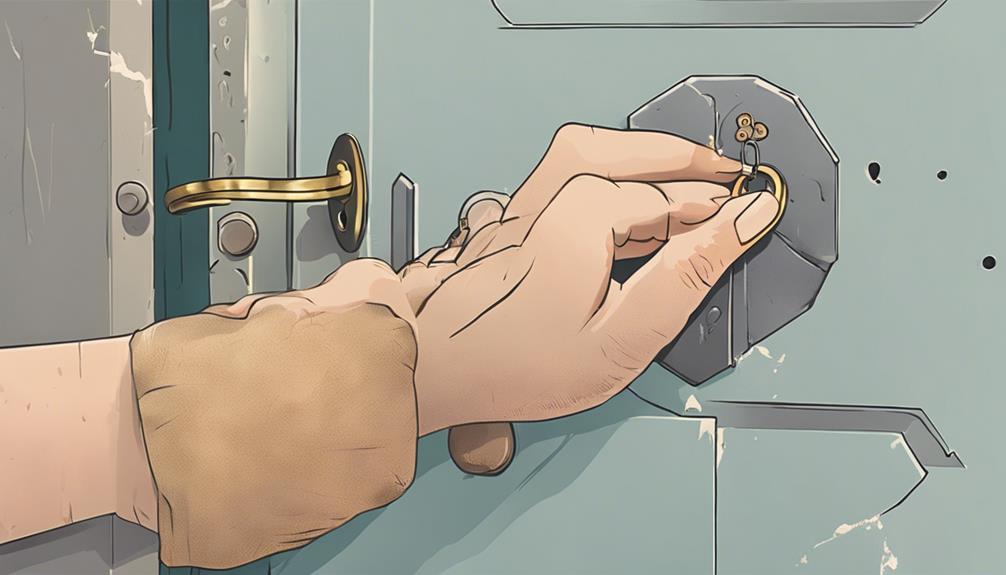
After ensuring your keys are properly lubricated following the techniques mentioned earlier, it is important to focus on avoiding forceful turns when using them in locks. Excessive key pressure can lead to potential breakage. Remember, the key is there to open the door, not to challenge your strength. Utilize a smooth turning technique, keeping the pressure consistent throughout the rotation. If you encounter resistance, do not force it. Instead, try wiggling the key gently while turning to ease it into the correct position. By mastering the art of finesse over brute strength and understanding the risks of forceful turns, you can prolong the life of your keys and locks.
Signs of Key Weakness
Weakness in keys can manifest in various ways, often presenting telltale signs that indicate potential issues with their structural integrity or function. When it comes to your keys, keep an eye out for the following signs of weakness:
- Excessive Wear: If your key shows signs of significant wear and tear, it may be a sign of material fatigue.
- Visible Cracks: Cracks in the key material can weaken its overall structure, making it more prone to breakage.
- Loose Fitting: A key that feels loose in the lock or wiggles excessively could signal a problem with its design or alignment.
- Difficulty Turning: Keys that suddenly become difficult to insert or turn smoothly might indicate underlying issues with the key design.
Key Bent or Warped?
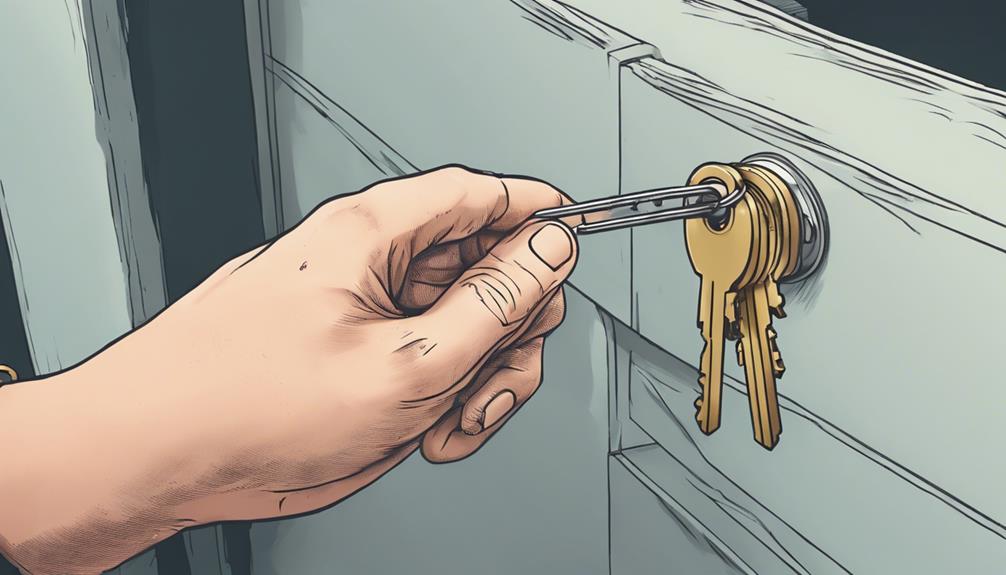
If you've ever found yourself grappling with a key that seems to be bending or warping, it's crucial to address this issue promptly to prevent further damage. When a key starts to bend, it can lead to misalignment, making it difficult to operate the lock smoothly. To avoid this problem, verify your keys are made of sturdy materials and handle them with care. Here's a handy table to help you understand key bending and alignment:
| Issue | Description |
|---|---|
| Key Bending | Key physically deforming, causing misalignment. |
| Misalignment | Key not fitting properly in the lock due to bending. |
| Causes | Forceful turning, poor material quality, or wear. |
| Prevention | Use gentle pressure, quality keys, regular checks. |
| Solution | Replace severely bent keys; adjust slightly bent ones. |
Key Stuck in the Lock
When a key becomes stuck in the lock, it can be a frustrating and inconvenient situation. Here's what you can do to tackle this problem with a touch of humor:
- Stay Calm: Panicking won't help, and it might make matters worse.
- Wiggle It: Gently jiggle and wiggle the key to see if it loosens up.
- Lubricate: If the key is still stuck, try using some graphite or lubricant.
- Call for Help: If all else fails, it might be time to call a locksmith for key extraction or even lock replacement.
Low Rate Locksmith Services

For those seeking reliable locksmith services at competitive rates, Low Rate Locksmith is a go-to option. Low Rate Locksmith offers a wide range of locksmith services, from key duplication to lock repairs, all at affordable prices. Their team of skilled professionals is equipped to handle any lock-related issue you may encounter, ensuring a quick and efficient solution every time. Whether you are locked out of your home, need to replace your locks, or require a new set of keys, Low Rate Locksmith has got you covered. Don't break the bank when dealing with locksmith services; choose Low Rate Locksmith for affordable options that don't compromise on quality or expertise. Trust them to secure your property without emptying your wallet. If you want to learn more about the secrets of broken key extraction, check out this insightful post on the topic.
Conclusion
As you navigate the intricate world of key maintenance, remember that your keys are the gatekeepers to your safety and security. Treat them with care, like delicate flowers in a garden of locks. By following the tips provided in this guide, you can guarantee that your keys remain strong and reliable, standing tall against the winds of wear and tear. Stay vigilant, stay informed, and watch your keys bloom with longevity and resilience.

